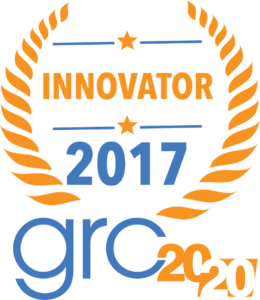Description
Technology Innovator in Enterprise GRC Management
Executive Summary
The organization requires complete situational and holistic awareness of GRC across operations, processes, relationships, systems, and data to see the big picture of risk and its impact on organization performance and strategy. Distributed, dynamic, and disrupted business requires the organization to take a strategic approach to GRC data architecture. GRC fails when risk and compliance issues are addressed as a system of parts that do not integrate and work as a collective whole. GRC is about the interactions and relationships of cause and effect across strategy, process, transactions, information, and technology supporting the business and requires a GRC information architecture that is highly agile and dynamic. To help organizations overcome the challenges of risk and compliance silos, Lockpath introduced dynamic documents with the release of Keylight 4.4 in July 2016. Today, users can easily create GRC related documents as tables and turn sections, clauses, and citations into records. Each record is assigned an owner, cataloged, tracked, and can be linked out to other records in Keylight to provide evidence or support for compliance activities. In this context, GRC 20/20 has recognized Lockpath Dynamic Documents with a 2017 GRC Innovation Award for the best innovation in Enterprise GRC Management.
Table of Contents
- Organizations Encumbered by Complexity
- Lockpath Dynamic Documents
- Innovation in Enterprise GRC Management
- What Lockpath Dynamic Documents Does
- Benefits Organizations Receive with Lockpath Dynamic Documents
- Considerations in Context of Lockpath Dynamic Documents
- About GRC 20/20 Research, LLC
- Research Methodology
Author
 Michael Rasmussen – The GRC Pundit @ GRC 20/20 Research, Michael Rasmussen is an internationally recognized pundit on governance, risk management, and compliance (GRC) – with specific expertise on the topics of GRC strategy, process, information, and technology architectures and solutions. With 23+ years of experience, Michael helps organizations improve GRC processes, design and implement GRC architectures, and select solutions that are effective, efficient, and agile. He is a sought-after keynote speaker, author, and advisor and is noted as the “Father of GRC” — being the first to define and model the GRC market in February 2002 while at Forrester Research, Inc.
Michael Rasmussen – The GRC Pundit @ GRC 20/20 Research, Michael Rasmussen is an internationally recognized pundit on governance, risk management, and compliance (GRC) – with specific expertise on the topics of GRC strategy, process, information, and technology architectures and solutions. With 23+ years of experience, Michael helps organizations improve GRC processes, design and implement GRC architectures, and select solutions that are effective, efficient, and agile. He is a sought-after keynote speaker, author, and advisor and is noted as the “Father of GRC” — being the first to define and model the GRC market in February 2002 while at Forrester Research, Inc.
©GRC 20/20 Research, LLC. All Rights Reserved.
No part of this publication may be reproduced, adapted, stored in a retrieval system or transmitted in any form by any means, electronic, mechanical, photocopying, recording or otherwise, without the prior permission of GRC 20/20 Research, LLC. If you are authorized to access this publication, your use of it is subject to the Usage Guidelines established in client contract. The information contained in this publication is believed to be accurate and has been obtained from sources believed to be reliable but cannot be guaranteed and is subject to change. GRC 20/20 accepts no liability whatever for actions taken based on information that may subsequently prove to be incorrect or errors in analysis. This research contains opinions of GRC 20/20 analysts and should not be construed as statements of fact. GRC 20/20 disclaims all warranties as to the accuracy, completeness or adequacy of such information and shall have no liability for errors, omissions or inadequacies in such information. Although GRC 20/20 may include a discussion of related legal issues, GRC 20/20 does not provide legal advice or services and its research should not be construed or used as such.[/vc_column_text][/vc_column][/vc_row]






